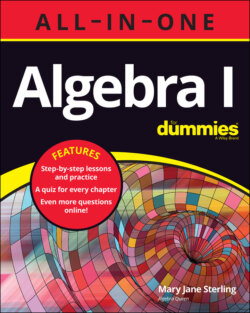Читать книгу Algebra I All-in-One For Dummies - Mary Jane Sterling, Mary Sterling Jane - Страница 19
Picking out primes and composites
ОглавлениеA number is considered to be prime if it can be divided evenly only by 1 and by itself. The prime numbers are: 2, 3, 5, 7, 11, 13, 17, 19, 23, 29, 31, and so on. The only prime number that’s even is 2, the first prime number. Mathematicians have been studying prime numbers for centuries, and prime numbers have them stumped. No one has ever found a formula for producing all the primes. Mathematicians just assume that prime numbers go on forever.
A number is composite if it isn’t prime — if it can be divided by at least one number other than 1 and itself. So the number 12 is composite because it’s divisible by 1, 2, 3, 4, 6, and 12. Chapter 8 deals with primes, but you also see them throughout the chapters, where I show you how to factor primes out of expressions.
Numbers can be classified in more than one way, the same way that a person can be classified as male or female, tall or short, blonde or brunette, and so on. The number –3 is negative, it’s an integer, it’s an odd number, it’s rational, and it’s real. The number –3 is also a negative prime number. You should be familiar with all these classifications so that you can read mathematics correctly.
